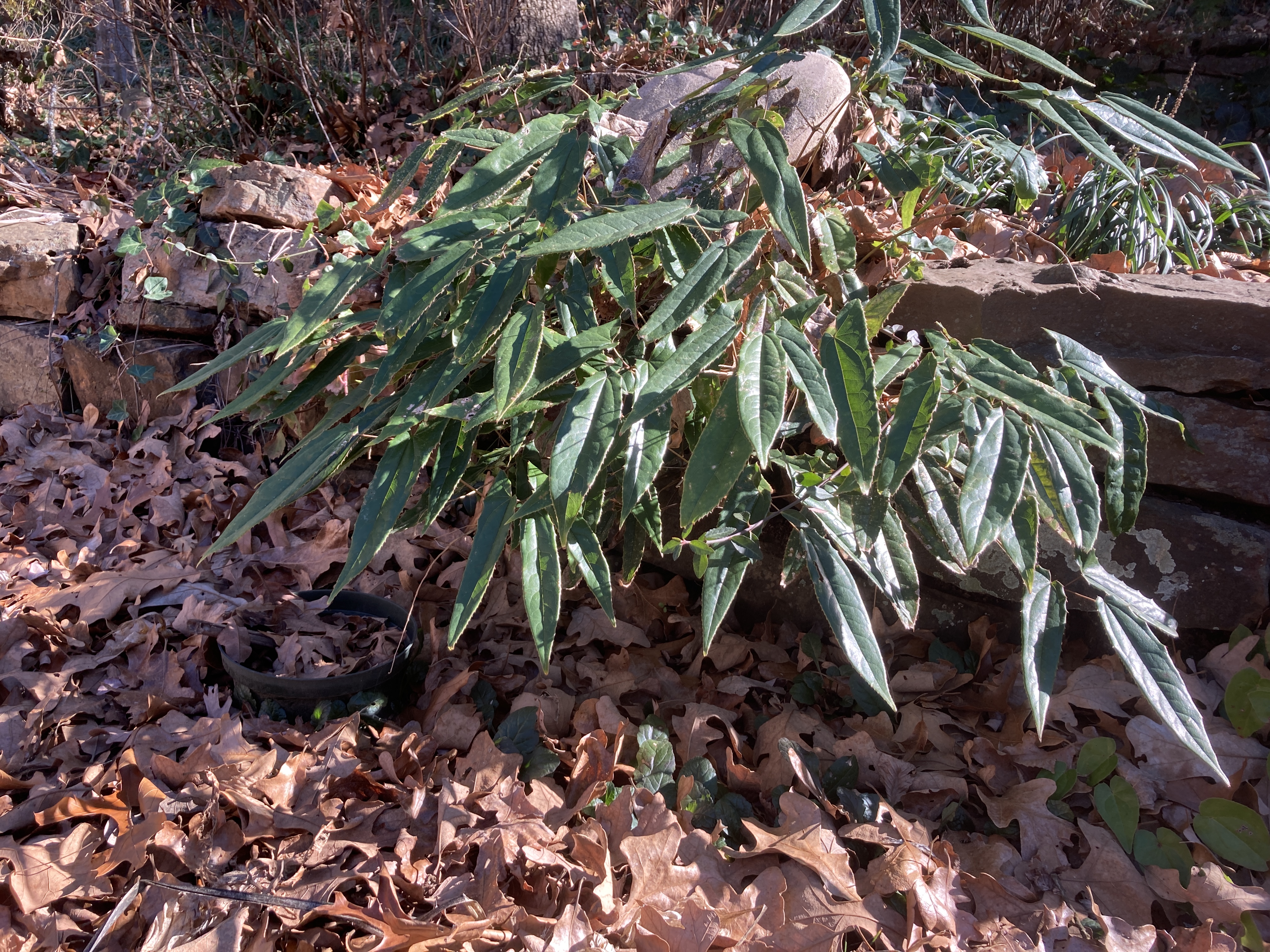Resource Library
Plant of the Week: Epimedium wushanense; Barrenwort or Wushan Fairywing
Twenty-five years ago I started noticing new barrenworts (Epimedium sp.) in the garden catalogs, so gradually over the next two decades I began establishing a modest collection of species and cultivars. Eventually accumulating about 45 kinds, my fever has now cooled. Looking them over, I’ve decided the best of the Chinese species in my dry Ozark garden is Epimedium wushanense.
The 60 species of Epimediums that have been described to date belong to the barberry family and grow as evergreen or herbaceous perennials. The species first described and grown in gardens were from southern Europe in the Mediterranean region. These have been grown and hybridized since the 1880s but represent just a fraction of the species that have come out of southwestern China, especially the mountainous regions of Sichuan and Yunnan Provinces, since its opening to the West in the 1980s.
Wushan fairywing is one of the largest barrenworts with evergreen mounds of foliage to two feet tall. It has the typical three-parted compound leaf of the species with individual leaflets leathery, to eight inches long and armed with short, bristly teeth. For me the leaves persist for two years. The 1-year-old leaves display no bronzing over winter and are crisp and green until new leaves appear in the spring; the 2-year-old leaves, if allowed to suffer through a second winter, are more tattered but still mostly evergreen. Plants spread by underground rhizomes and my decade-old plant has a crown that is now about a foot across.
This species blooms for me in mid-April, which is towards the end of the Epimedium blooming season. It has an open truss of inch-wide, four-spurred cream-colored flowers that peak out from the foliage. Some photos I’ve seen show the spike standing erect, but not so for my plant. The foliage is the impressive thing about this plant, but its flower display is robust enough to make it a good candidate for hybridizing. The breeder who can put some bright yellow flowers on erect trusses while retaining the strong foliage characteristics will have a winning garden plant.
This species was first described by the Chinese botanist T. S. Ying in 1975 but not brought into cultivation until the 1990’s when collected by the Japanese plant explorer and botanist Mikinori Ogisu. Ogisu is one of the most prolific plant collectors working in China and has many interesting and beautiful plants to his credit. He has a special affinity for Epimedium. Ying named the species epitaph after Wushan County in Sichuan where it was first collected when he was working on revising the Chinese species of Epimedium.
On my curio shelf I have a package of Genuine Horny Goat Weed I purchased from a vending machine in a seedy men’s room along Interstate 40. In China, Epimedium has a long history of medicinal use, primarily as an aphrodisiac. Western medicine does not acknowledge any merits to Horny Goat Weed – not when there is Viagra to sell – but E. wushanense has been extensively analyzed for antioxidant flavonoid compounds and other physiologically active constituents.
I have my Wushan fairywing clump growing in the face of a retaining wall where it receives sun in the winter and mostly shade during the summer. Before being moved it was planted beneath a Japanese maple in a moderately heavy clay soil. In both locations it didn’t get much in the way of special care, but survived and spread whereas a number of other Chinese species didn’t grow much or faded away. This Darwinian approach to gardening tells me that Wushan fairywing is a tough plant with good potential as an evergreen groundcover or an interesting specimen where a compact, slow growing evergreen almost-shrub is needed.
For more information about horticulture or to see other Plant of the Week columns, visit Extension’s Website, www.uaex.uada.edu, or contact your county extension agent. The Cooperative Extension Service is part of the U of A Division of Agriculture.
